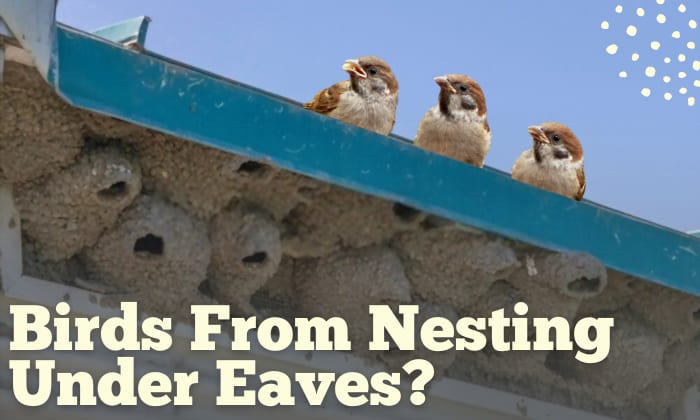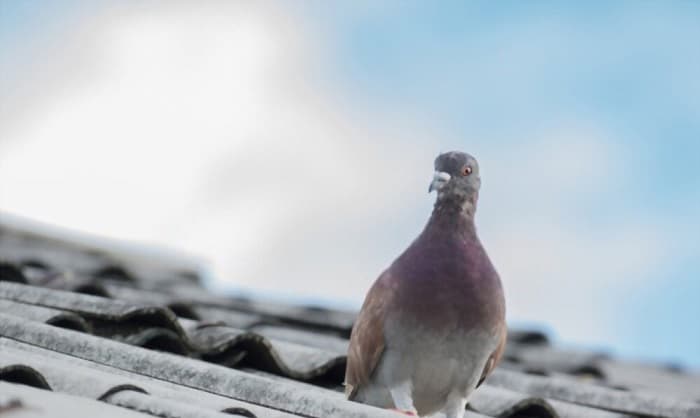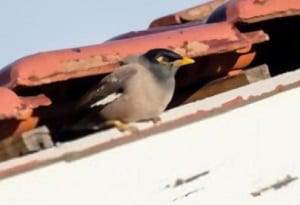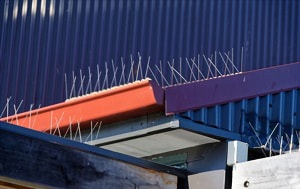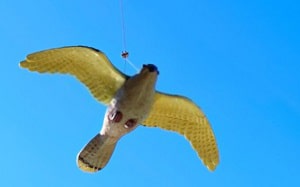Certain bird species prefer building nests under roofs’ overhangs, which can cause damage to the roof and trouble homeowners. This is a tricky situation, but the good news is there are many ways on how to deter birds from nesting under eaves.
Why do birds like to come there? During winter, birds nest on houses because they need a warm and safe place to stay, and the roof can provide good insulation from cold weather. It is also an ideal place for them to take care of their young until they are ready to fly.
Table of Contents
- Ways to Stop Birds From Nesting Under Eaves
- 1. Keep your Property Clean.
- 2. Cover all holes and possible entry points in your roof.
- 3. Put roosting and perching spikes on your roof.
- 4, Put a decoy on your roof.
- 5. Put a bird house and bird feeder in your garden.
- 6. Use safe and non-toxic bird repellents on the eaves of your roof.
- 7. Install an Audio Deterrent.
- 9. Hang or tape reflectors on your roof.
- Frequently Asked Questions
- Conclusion
Ways to Stop Birds From Nesting Under Eaves
1. Keep your Property Clean.
One of the reasons why birds nest in roof eaves is that they know you have food sources that are readily available. By staying on the eaves of the top roof or on porch eaves, they can remain protected and, at the same time, have a good vantage point for surveying food.
Always put lids on your trash bins around house. Trash attracts not only birds but other pests, such as squirrels and rodents.
2. Cover all holes and possible entry points in your roof.
Make a thorough inspection of the outside and from inside roof areas to ensure you don’t miss anything.
Look for holes in soffits and other possible points of entry for birds into your roof structure. If you find any gaps or openings, seal them with wood or a wire mesh to discourage birds from nesting in fascia compartments of your roof, which is one of their favorite entry points to make nests.
You can also install bird netting under eaves to cover the gaps and prevent birds from infiltrating your roof.
3. Put roosting and perching spikes on your roof.
Installing roosting spikes on the roof is one of the most effective ways to deter a bird from making a nest. Where to place these spikes? Place them on the margins of the roof to prevent birds from roosting and building nests there as well as in gutters and drainage systems which can clog these passageways.
4, Put a decoy on your roof.
Install a life-size owl or hawk to keep birds from making a nest on your roof. Remember that these scare tactics can only work for small to medium-sized birds because they are afraid of birds that are bigger than them. These may not be effective for larger birds.
When choosing between a hawk or an owl decoy, the hawk will serve as a deterrent to birds because most small birds are more afraid of hawks than owls, especially during the daytime.
5. Put a bird house and bird feeder in your garden.
Fender installation is a very friendly way to get rid of birds naturally from your house roof by providing an alternate place for nesting. Hang your feeders under a tree and place the bird house alongside it. This may also encourage them to nest on the tree rather than on your roof.
6. Use safe and non-toxic bird repellents on the eaves of your roof.
You can use these liquid repellents as a spray to keep birds from nesting on your roofing structures, such as eaves, columns, and soffits. When deciding what kind of repellent to use, remember that it should be non-toxic and environmentally friendly.
The smell of these repellents makes birds uncomfortable, keeping them from building their nests in unwanted places. Contact your local bird control professional to get advice on the most suitable repellent for your needs to prevent birds nesting in roofs.
7. Install an Audio Deterrent.
Commercially available audio deterrents for birds come in a variety of features. You can install this on your roof, and the sound will keep birds from making a nest. Birds are afraid of recorded hawk sounds or sounds that mimic a bird’s distress call.
9. Hang or tape reflectors on your roof.
This is one of the easiest solutions to keep birds from nesting in fascia of your roof.
The reflection of sunlight throws off birds, and when you have these visual deterrents installed, such as hanging or moving bird reflectors. The combination of movement and the reflective surface will instantly affect the birds.
Frequently Asked Questions
What are the birds that usually nest on eaves?
The species of birds usually found nesting in eaves are the house sparrows, barn swallows, house martins, house wren, blue tit, and the feral pigeon, among others.
- House Sparrow (Passer domesticus) – This small passerine bird is one of the most common birds seen in residential and urban areas. They have this habit of nesting in houses and buildings, hiding their nests in crevices such as eaves and building walls.
- House Wren (Troglodytes aedon) – The house wren is a native species of migratory bird widely distributed across the United States. It is a tiny bird that can easily pass through holes, and that’s one of the reasons why they can easily nest in openings on your roof or on columns in your house
Is it legal to remove a nest?
Once the nest has eggs in it, you must not remove it. This is the humane way of dealing with nests, and it is illegal to get rid of a bird’s nest that holds eggs.
Federal law protects birds; even professional bird control companies won’t remove a nest for you. It is best to wait for birds to hatch and leave the nest.
Why do swallows like to nest on eaves?
Swallows are the most notorious nesters under the eaves of roofs. During spring, they usually migrate to North America and build their characteristic mud nests on barns and homes.
They choose these locations to protect themselves from predators, and it will allow them to take care of their young without being bothered. It is also a good place for them to keep warm.
Is bird poop harmful?
Yes, bird droppings may transmit various bacterial and fungal diseases that can harm humans. It is best to keep birds away from human dwellings to avoid being exposed to their droppings.
Aside from this, it is very unsightly to see stains of bird droppings on columns under your eaves, roof margins, and porch areas. The smell of bird poop can be very annoying, and I’m sure you don’t want that kind of smell in your house!
Read more: How to keep birds from pooping on my porch?
Conclusion
It is a challenge when birds become pests on our property. There are simple solutions to repel birds from nesting, but these bird deterrents are more effective when more than one strategy is used.
Thus, visual deterrents are more effective when you have an audio deterrent system alongside the decoys and bird spikes. Now that you have learned these ideas on how to deter birds from nesting under eaves, you can share this knowledge with others.

George and I became friends after a birdwatching trip with our new group. And we have been enjoying every adventure together. When he told me the idea of establishing a site that shares our experiences and fun, I immediately agreed. After trials and errors, here we have Thayerbirding.


